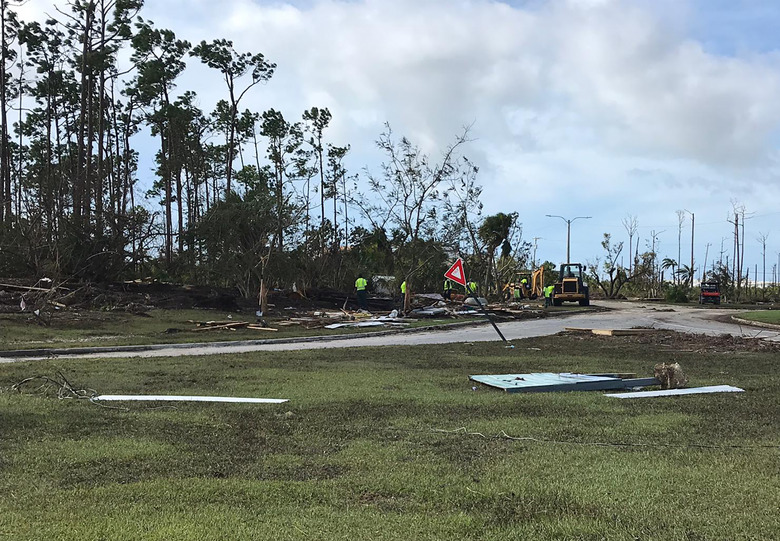Everything You Need To Know About Hurricane Dorian
The Eastern coast of the United States is bracing for Dorian after the slow-moving storm pummeled the Bahamas, resulting in catastrophic damage, relentless flooding, injuries and at least seven deaths.
The historic Dorian – it's tied with a 1935 hurricane for being the strongest storm to hit land in the Atlantic – ravaged Grand Bahama Island and Abaco Island late Sunday.
It's still difficult to know the extent of the damage, but the Red Cross believes that dangerous wind gusts as high as 220 miles per hour, storm surges and flooding may have destroyed as many as 13,000 homes. Satellite images from the island show that the majority of land still appeared to be flooded as of Tuesday. Tragically, at least seven people were killed during the storm, and others are awaiting rescue or being treated for injuries. Bahamian Prime Minister Hubert Minnis said it was "one of the greatest national crises in our country's history."
Though the storm has passed, the damage isn't done. Along with the lack of shelter, officials are worried that the flooding has contaminated wells, making a lack of clean drinking water a major concern. Other potential dangers include downed power lines and other destroyed infrastructure. Relief efforts are underway.
What’s up Next?
What's up Next?
As Dorian has continued on its way towards the East Coast of the United States, it's been downgraded to a Category 2 storm. But don't let the "downgrade" fool you – it still has the potential to do major damage, and it's also getting bigger.
One of the most dangerous aspects of Dorian is its speed. The storm is moving at just 1 or 2 miles per hour, meaning it seems to just sit over areas and dump nonstop rain and sustained winds of up to 110 miles per hour.
As of Tuesday, officials believe it will just sidestep making landfall in Florida, though the Eastern coast of the state will likely still feel the effects of the storm. Then, it will likely head north toward Georgia, where meteorologists are hoping it also skirts coastal landfall. But then, as it heads toward the Carolinas and Virginia, it could hit later this week. Many of those areas are under hurricane warnings, with officials advising citizens to stock up on water and other supplies.
But it’s a Tricky One to Track …
But it's a Tricky One to Track ...
Dorian is moving slowly but changing as it goes, making it difficult for meteorologists to predict its path ahead of time. Even small changes to weather patterns could mean big changes to its course. To stay on top of it, get up-to-the-minute updates online or with your local meteorologists, and check in with the Red Cross to see the ways you can help contribute to relief efforts.
Cite This Article
MLA
Dragani, Rachelle. "Everything You Need To Know About Hurricane Dorian" sciencing.com, https://www.sciencing.com/hurricane-dorian-news-13721474/. 4 September 2019.
APA
Dragani, Rachelle. (2019, September 4). Everything You Need To Know About Hurricane Dorian. sciencing.com. Retrieved from https://www.sciencing.com/hurricane-dorian-news-13721474/
Chicago
Dragani, Rachelle. Everything You Need To Know About Hurricane Dorian last modified March 24, 2022. https://www.sciencing.com/hurricane-dorian-news-13721474/
